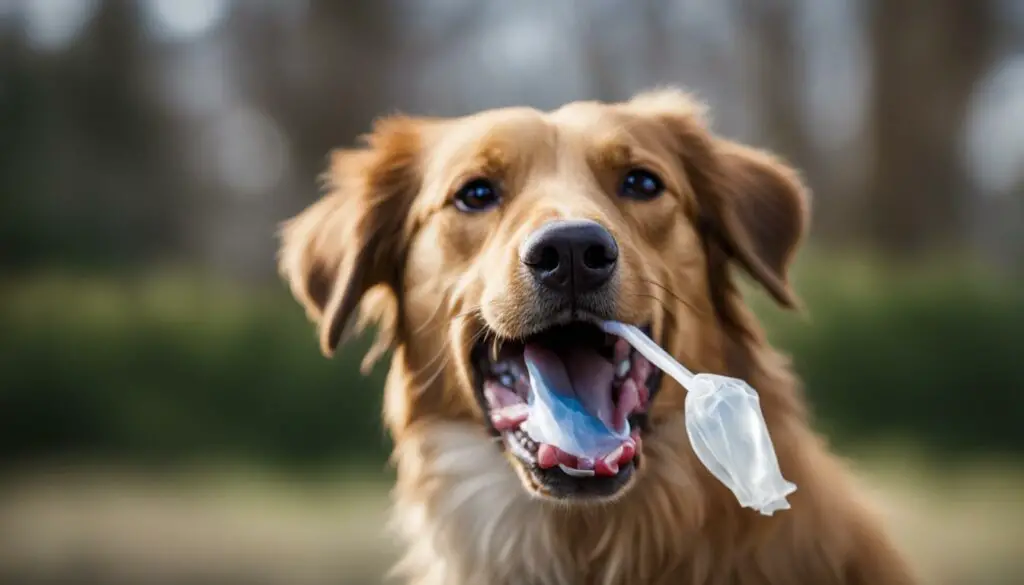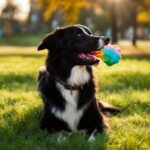If you have a dog, you know they have a knack for getting into things they shouldn’t. One common concern is when your furry friend decides to swallow a small piece of a plastic squeaker. Not only is this alarming, but it can also be dangerous for your dog’s health and well-being. In this article, I’ll outline the steps you should take if your dog has swallowed a plastic squeaker and provide essential information to ensure their safety.
Key Takeaways:
- Act quickly if your dog swallows a small piece of a plastic squeaker to prevent potential complications.
- Recognize the signs of a swallowed squeaker, such as choking, vomiting, and changes in behavior.
- Contact your vet immediately or the closest emergency pet clinic for guidance.
- Seek professional veterinary care to assess the situation and determine the appropriate treatment.
- Prevent future incidents by supervising your dog during playtime and choosing safe toys.
Recognizing the Signs of a Swallowed Squeaker
When your dog swallows a small piece of a plastic squeaker, it’s important to be able to recognize the signs. The ingestion of a squeaker can be a choking hazard and may lead to potentially serious complications such as an intestinal blockage. By being aware of the following symptoms, you can quickly identify if your dog has swallowed a squeaker:
- Choking or pawing at the mouth
- Vomiting
- Loss of appetite
- Lethargy
- Constipation
- Changes in behavior
If you notice any of these signs in your dog, it’s crucial to seek immediate veterinary attention.
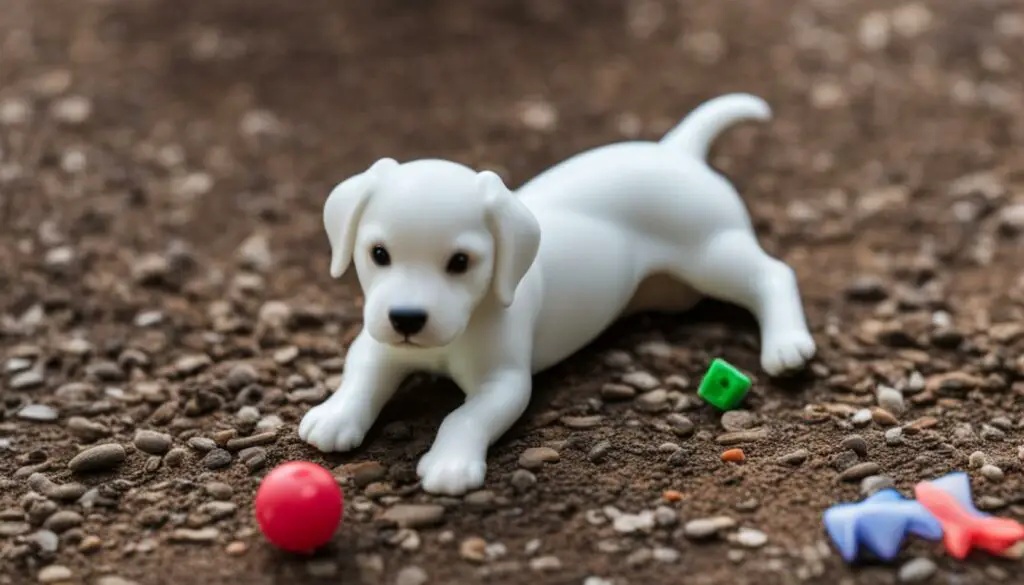
In some cases, the dog may not exhibit any symptoms immediately after swallowing the squeaker. However, it’s important to remain vigilant and monitor your dog closely for any changes in behavior or signs of discomfort. Swallowed squeakers can pose a serious threat to your dog’s health, and early detection is key in preventing further complications.
Acting Quickly: What to Do When Your Dog Swallows a Squeaker
When your beloved furry friend swallows a piece of a plastic squeaker, it’s crucial to act swiftly to ensure their health and well-being. Time is of the essence, so here are the steps you should take when faced with this emergency:
- Contact your vet immediately: Your veterinarian is the best source of guidance in this situation. Call them right away and follow their instructions. If it’s after-hours or your vet is unavailable, reach out to your local emergency pet clinic for immediate guidance.
- Avoid inducing vomiting without veterinary advice: While inducing vomiting may be appropriate in some cases, it should only be done under the guidance of a veterinarian. Vomiting can potentially cause further harm if the swallowed object has sharp edges or is made of certain materials. Follow professional advice before taking any action.
- Observe your dog closely: While waiting for veterinary assistance, closely monitor your dog’s behavior. Keep an eye out for any signs of distress, such as choking, pawing at the mouth, or changes in behavior. Document any symptoms to provide accurate information to your vet.
Remember, it’s vital to seek professional help promptly when your dog swallows a squeaker. Your veterinarian will be able to assess the situation, provide appropriate treatment, and guide you through the process. Acting quickly can significantly reduce the risk of complications and ensure the best outcome for your furry companion.
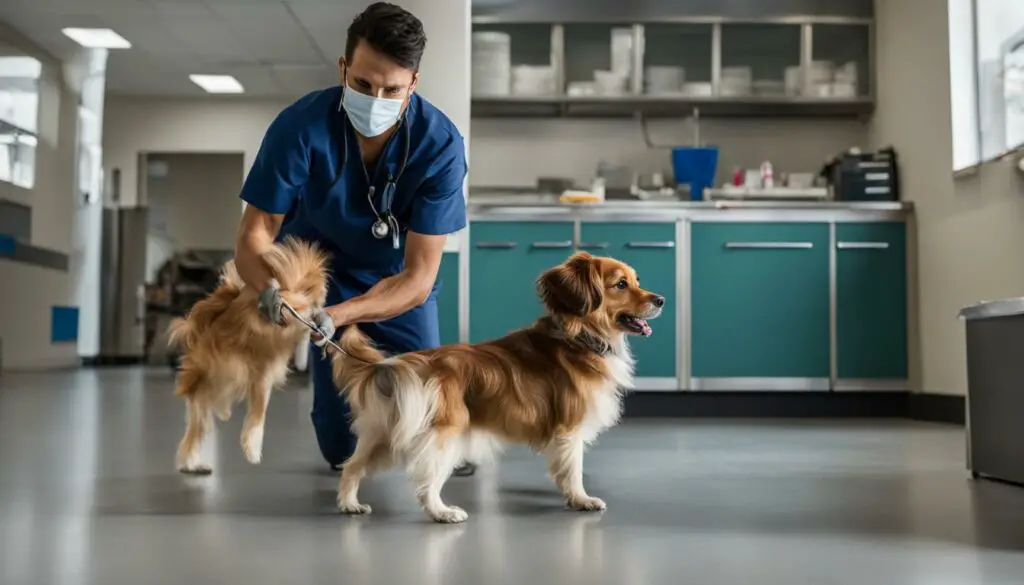
Table: Signs that Require Immediate Veterinary Attention
| Signs | Description |
|---|---|
| Choking or difficulty breathing | If your dog is struggling to breathe or showing signs of choking, immediate veterinary attention is required. |
| Persistent vomiting | Repeated vomiting can indicate an obstruction or other serious issues. It’s important to consult a veterinarian without delay. |
| Abdominal pain and distress | If your dog exhibits signs of pain in the abdomen or appears uncomfortable, it’s crucial to seek professional help. |
| Lethargy or weakness | A lack of energy or weakness can be indicative of an underlying problem and warrants immediate veterinary attention. |
Seeking Veterinary Care
If your dog has swallowed a small piece of a plastic squeaker, it is important to seek veterinary care promptly to ensure their health and safety. In many cases, professional intervention is necessary when a dog ingests a foreign object. The veterinarian will assess the situation, determine the location of the squeaker, and recommend the most appropriate course of action.
One common step in seeking veterinary care is an examination. The vet may recommend bringing your dog in for a thorough examination to assess their overall condition and detect any potential complications. They may also perform an X-ray to determine the position of the squeaker and evaluate the extent of the problem.
Based on their evaluation, the veterinarian may recommend inducing vomiting, monitoring for the object to pass naturally, or surgical intervention if the object becomes lodged in the intestines. Each case is unique, and the vet’s expertise is essential in making the right treatment decision for your dog’s specific situation.
| Treatment Options | Description |
|---|---|
| Inducing Vomiting | If the object is still in the stomach and can safely be brought up, the veterinarian may induce vomiting to help remove the squeaker. |
| Monitoring | If the squeaker is small and the dog’s condition is stable, the vet may suggest monitoring the dog at home. This involves observing their behavior, appetite, and bowel movements for any signs of distress or obstruction. |
| Surgical Intervention | If the squeaker is causing an intestinal blockage or is stuck in a dangerous position, surgery may be necessary to remove the object and prevent further complications. |
It is crucial not to delay seeking professional help when your dog swallows a squeaker. The expertise of a veterinarian is indispensable in ensuring your dog’s health and safety. If you suspect your dog has swallowed a foreign object, contact your vet immediately and follow their guidance.
Potential Treatment Options
When your dog has swallowed a small piece of a plastic squeaker, seeking timely treatment is essential for their health and safety. The appropriate course of action will depend on factors such as the size of the squeaker, the size of your dog, and the location of the object. Your veterinarian will guide you in determining the best treatment options for your furry friend.
Treatment Options
Depending on the specific circumstances, potential treatment options for a dog that has swallowed a squeaker may include:
- Inducing vomiting: In some cases, a veterinarian may recommend inducing vomiting to help expel the object. However, this should only be done under the guidance and supervision of a professional, as certain objects or materials can cause further harm if regurgitated.
- Monitoring for the object to pass naturally: If the squeaker is small enough and not causing immediate distress, your vet may advise monitoring your dog’s condition at home. Keep a close eye on their behavior, appetite, and bowel movements. If any concerning symptoms arise, contact your vet without delay.
- Surgical intervention: If the squeaker becomes lodged in the intestines or poses a significant risk, your vet may recommend surgical intervention. This can involve removing the object through an incision in the abdomen or using minimally invasive techniques such as endoscopy.
It’s crucial to follow your veterinarian’s guidance and not attempt any treatments without professional advice. The safety and well-being of your dog should always be the top priority.
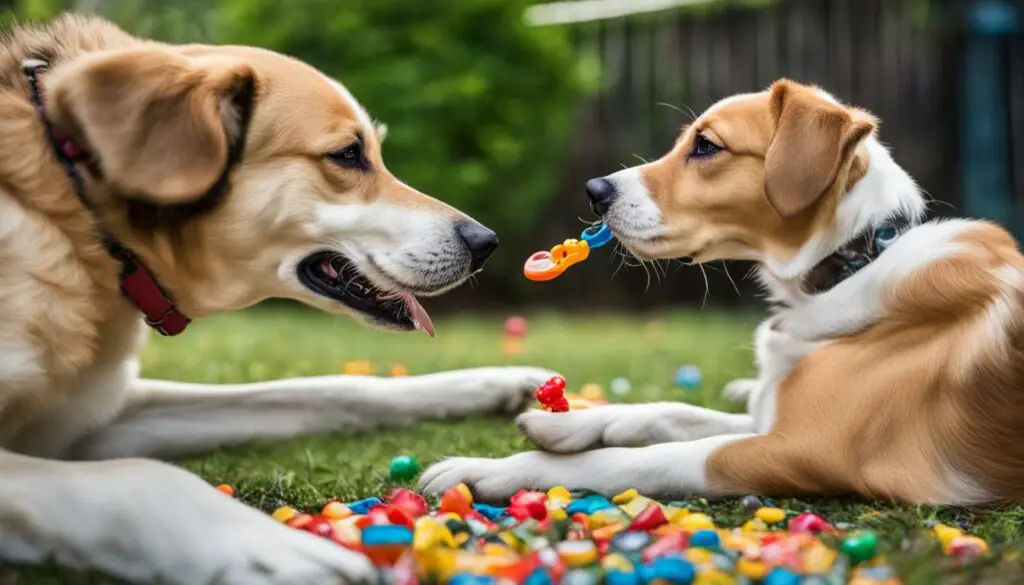
Prevention is Key
While it’s important to know how to address the situation if your dog swallows a squeaker, prevention is always the best approach. By taking proactive measures, you can minimize the risk of your dog swallowing small objects and reduce the need for emergency interventions. Some preventive steps you can take include:
- Supervise your dog during playtime, especially when they have toys with small parts.
- Remove any small or easily ingestible parts from toys before giving them to your dog.
- Choose toys that are appropriate for your dog’s size and behavior, opting for options that are designed to be safe and durable.
- Regularly inspect toys for signs of wear or damage and replace them if necessary.
By being proactive and vigilant, you can help keep your furry friend safe from the risks associated with swallowing small objects like squeakers.
In Case of Emergency
If your dog swallows a small piece of a plastic squeaker and is choking, unable to breathe, or showing signs of distress, it is crucial to seek immediate professional help. Take your dog to the nearest emergency veterinary clinic without delay. If you are unable to reach a vet or emergency clinic, you can also call animal poison control centers such as the ASPCA’s Animal Poison Control Center or the Pet Poison Helpline for guidance.
Remember, acting quickly in emergency situations can greatly impact the outcome and potentially save your dog’s life. Don’t hesitate to seek professional help when necessary.
Monitoring Your Dog’s Condition
After your vet has determined that the swallowed squeaker is small enough and your dog is not showing immediate signs of distress, monitoring their condition at home is recommended. Keeping a close eye on your dog’s behavior, appetite, and bowel movements is crucial to ensure their health and safety.
If you notice any concerning symptoms such as vomiting, changes in appetite, or signs of discomfort, it is important to contact your vet immediately. Remember that even if your dog appears to be doing well initially, complications can still arise, so continued monitoring is essential.
Implementing a daily routine of monitoring is necessary to detect any changes in your dog’s condition. Observe their energy levels, behavior, and eating habits. If your dog seems lethargic or experiences a loss of appetite, it could be a sign of a potential issue. Additionally, monitor their bowel movements for any abnormalities, such as constipation or diarrhea.
Important Signs to Watch Out For:
- Vomiting
- Changes in appetite
- Signs of discomfort or pain
By staying vigilant and attentive to your dog’s well-being, you can ensure that any potential complications from the swallowed squeaker are addressed promptly.
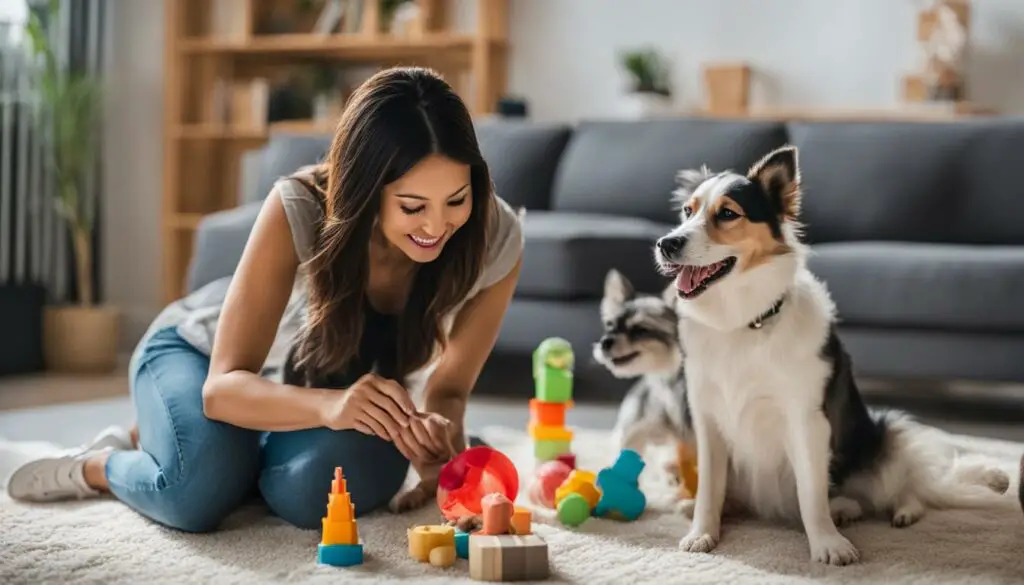
Preventing Future Incidents
When it comes to keeping your dog safe from swallowing small objects like squeakers, prevention is key. By taking a few simple steps, you can minimize the risk and ensure your dog’s health and safety.
Supervise Playtime
One of the most effective ways to prevent your dog from swallowing small objects is to closely supervise their playtime. Keep an eye on their interactions with toys, especially those that contain small or easily ingestible parts. If you notice any signs of chewing or tearing that could lead to a potential swallowing hazard, promptly remove the toy from your dog’s reach.
Choose Appropriate Toys
When selecting toys for your dog, opt for ones that are designed to be safe and durable. Consider toys that are made specifically for your dog’s size and behavior. Avoid toys with small components that could pose a choking hazard, such as detachable parts or squeakers. Instead, choose alternatives like rope toys, treat toys, tennis balls, chew toys, or plush toys without squeakers.
Regularly Inspect Toys
Regularly inspect your dog’s toys for signs of wear and tear. Look out for any loose stitching, frayed edges, or damaged parts that could potentially be swallowed. If you notice any flaws or deterioration, it’s best to discard the toy and replace it with a new one. Keeping your dog’s toys in good condition can help prevent accidents and ensure their safety during playtime.
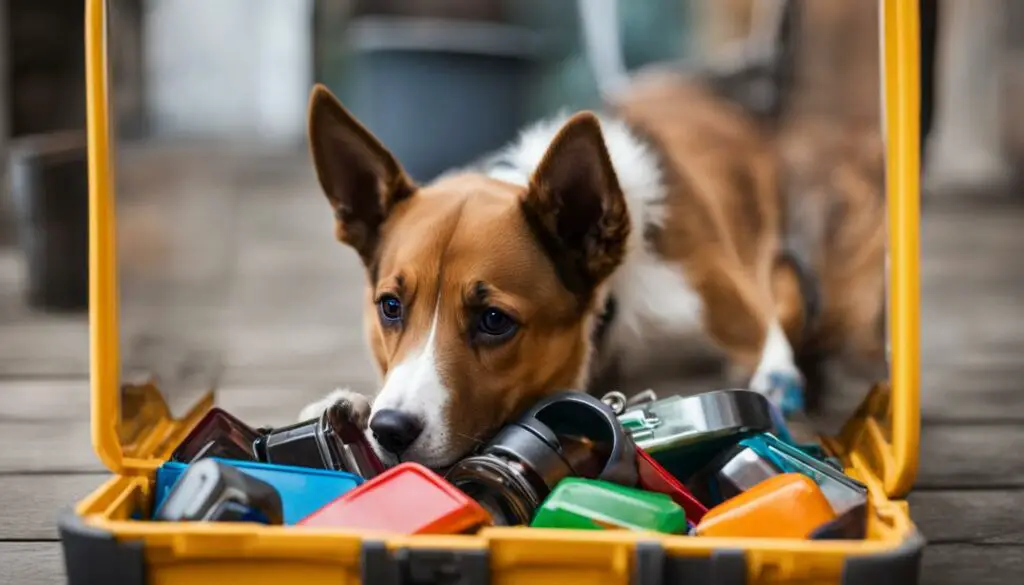
Conclusion
By closely supervising playtime, choosing appropriate toys, regularly inspecting toys, and taking proactive measures, you can significantly reduce the risk of your dog swallowing small objects like squeakers. Remember, prevention is the best approach to ensure your dog’s health and safety. Keep your furry friend happy and protected by following these simple guidelines.
When to Seek Professional Help
If your dog has swallowed a small piece of a plastic squeaker, it is crucial to know when to seek professional help. While some cases may not require immediate veterinary attention, certain situations warrant immediate intervention to ensure your dog’s health and safety.
If your dog is choking, unable to breathe, or showing signs of distress, it is essential to take them to the nearest emergency vet clinic without delay. These symptoms indicate a severe obstruction and require immediate medical intervention to prevent further complications.
If you are unable to reach a vet or emergency clinic, you can call animal poison control centers, such as the ASPCA’s Animal Poison Control Center or the Pet Poison Helpline, for guidance. These hotlines can provide expert advice on what to do if your dog ingests plastic or other potentially harmful substances.
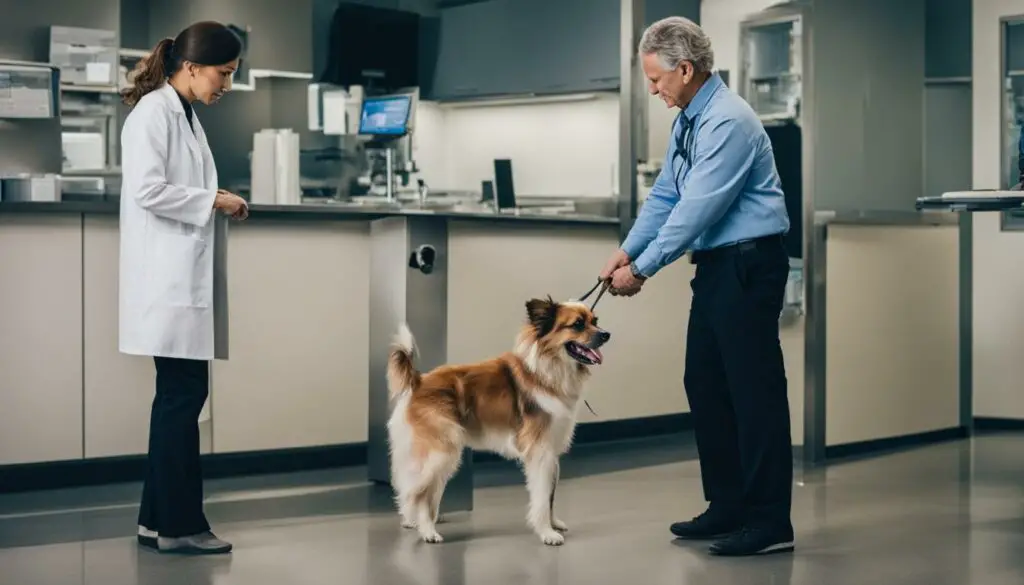
Common Symptoms Requiring Immediate Veterinary Attention:
- Choking
- Difficulty breathing
- Distress or discomfort
- Severe pain
- Pawing at the mouth
“When it comes to your pet’s health, it’s always better to err on the side of caution. Seeking immediate professional help can save your dog’s life.” – Dr. Smith, Veterinarian
The Dangers of Swallowed Squeakers
Swallowing a plastic squeaker can pose serious dangers to dogs. The squeaker can become lodged in the intestines, causing an intestinal blockage. This can result in severe pain, vomiting, constipation, and potentially life-threatening complications. It is crucial to take swift action to prevent these risks and ensure your dog’s well-being.
Signs of Intestinal Blockage
When a dog swallows a squeaker, it is important to be able to recognize the signs of an intestinal blockage. Look out for symptoms such as vomiting, loss of appetite, lethargy, constipation, and changes in behavior. If you notice any of these signs, it is essential to seek immediate veterinary attention for proper diagnosis and treatment.
Table: Signs of Intestinal Blockage
| Signs | Description |
|---|---|
| Vomiting | Repetitive throwing up or gagging |
| Loss of appetite | Refusal to eat or decreased interest in food |
| Lethargy | Unusual lack of energy or tiredness |
| Constipation | Difficulty passing stools |
| Changes in behavior | Unusual aggression, depression, or restlessness |
Prevention plays a key role in ensuring your dog’s safety. By taking proactive measures to prevent your dog from swallowing small objects like squeakers, you can significantly reduce the risk of complications. Always supervise your dog during playtime, choose appropriate toys, and regularly inspect toys for any signs of wear or damage. Additionally, consider alternative toys that do not pose a choking hazard, such as rope toys, treat toys, tennis balls, chew toys, or plush toys without squeakers.
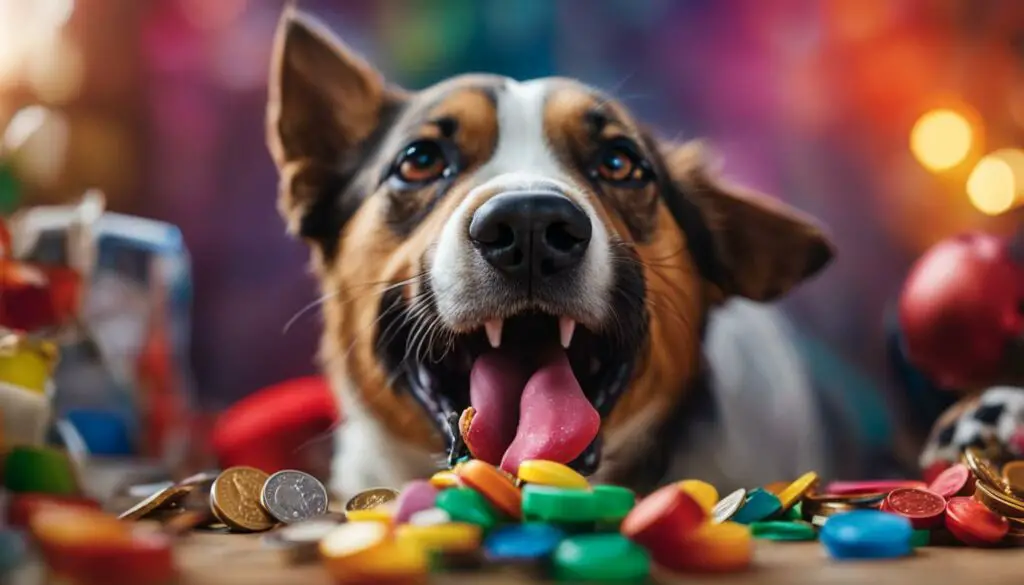
The Importance of Acting Quickly
When your dog swallows a small piece of a plastic squeaker, time is of the essence. Acting quickly can significantly reduce the risk of complications and increase the chances of a positive outcome. The faster you seek veterinary care, the more options there may be for treatment and intervention. Do not wait to see if the object passes naturally, as this can potentially worsen the situation.
If your dog has swallowed a plastic squeaker, the first step is to call your vet immediately. They will be able to provide guidance on the next steps to take. If your vet is closed or unavailable, contact your local emergency pet clinic for assistance. It is important not to induce vomiting unless directed by a veterinarian, as this can cause further harm if the object has sharp edges or is made of certain materials.
Acting quickly can also help prevent complications such as intestinal blockages. Swallowing a plastic squeaker can be dangerous and potentially lead to an obstruction in the intestines. This can cause severe pain, vomiting, constipation, and potentially life-threatening complications. Seeking veterinary care as soon as possible can help address the situation and prevent further harm to your dog.
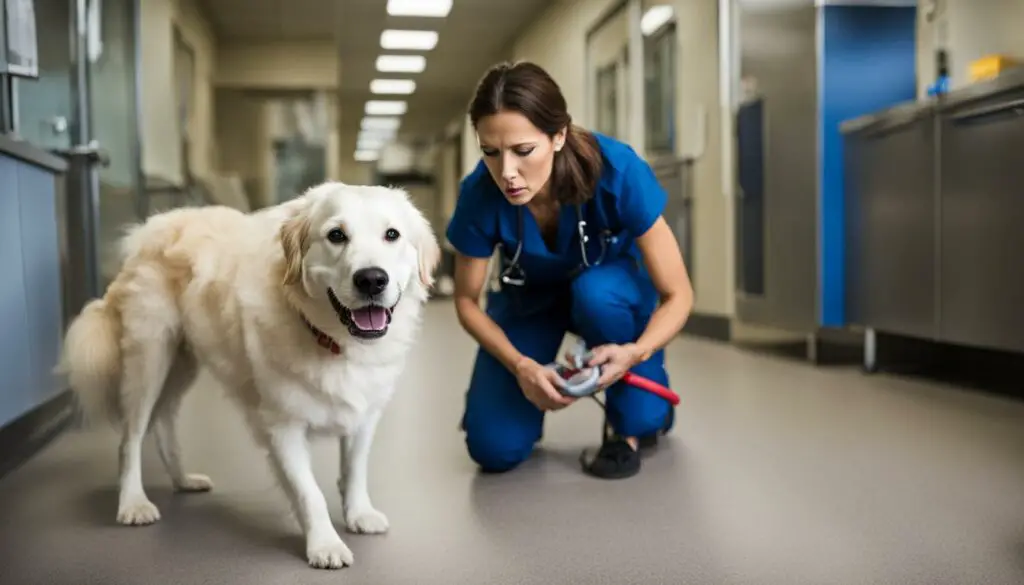
The Importance of Seeking Professional Help
It is crucial to know when to seek professional help if your dog swallows a small piece of a plastic squeaker. If your dog is choking, unable to breathe, or showing signs of distress, it is an emergency situation and you should take them to the nearest emergency vet clinic immediately. If you are unable to reach a vet or emergency clinic, you can call animal poison control centers such as the ASPCA’s Animal Poison Control Center or the Pet Poison Helpline for guidance.
Professional help is necessary to assess the situation and determine the best course of action. A veterinarian will be able to evaluate your dog’s condition, perform X-rays to locate the squeaker, and recommend the appropriate treatment. Time is of the essence in these situations, so it is important not to delay seeking professional help.
Potential Complications and Symptoms
When a dog swallows a small piece of a plastic squeaker, it can lead to various complications and symptoms that may indicate potential health risks. It is important to be aware of these signs and take appropriate action to ensure your dog’s health and safety.
Complications
- Intestinal Blockage: Swallowing a plastic squeaker can cause an intestinal blockage, which can be life-threatening if not treated promptly. The squeaker can become lodged in the intestines, obstructing the passage of food and causing severe pain.
- Choking Hazard: If the swallowed squeaker gets stuck in the throat, it can cause choking and difficulty in breathing. This is a medical emergency and requires immediate attention.
- Damage to the Digestive Tract: The sharp edges of the plastic squeaker can cause tears or punctures in the digestive tract, leading to complications such as infection or internal bleeding.
Symptoms
- Vomiting: Dogs may vomit repeatedly if they have swallowed a plastic squeaker. This is their body’s way of trying to expel the foreign object.
- Loss of Appetite: A dog that has a swallowed squeaker may have a decreased appetite or refuse to eat altogether.
- Lethargy: Dogs may become lethargic or weak due to the discomfort and pain caused by the intestinal blockage.
- Constipation: Difficulty passing stool or the absence of bowel movements can indicate a potential blockage.
- Choking or Pawing at the Mouth: If the squeaker is causing an obstruction in the throat, dogs may exhibit signs of choking or paw at their mouth in an attempt to remove the object.
- Abdominal Pain: Dogs may show signs of discomfort or pain in the abdominal area.
- Changes in Behavior: Swallowing a squeaker can cause dogs to exhibit changes in behavior, such as restlessness, irritability, or aggression.
If your dog shows any of these symptoms or you suspect they have swallowed a plastic squeaker, it is crucial to seek veterinary attention immediately. Early intervention can help prevent complications and ensure your dog’s well-being. Remember that only a veterinarian can provide an accurate diagnosis and recommend appropriate treatment options.
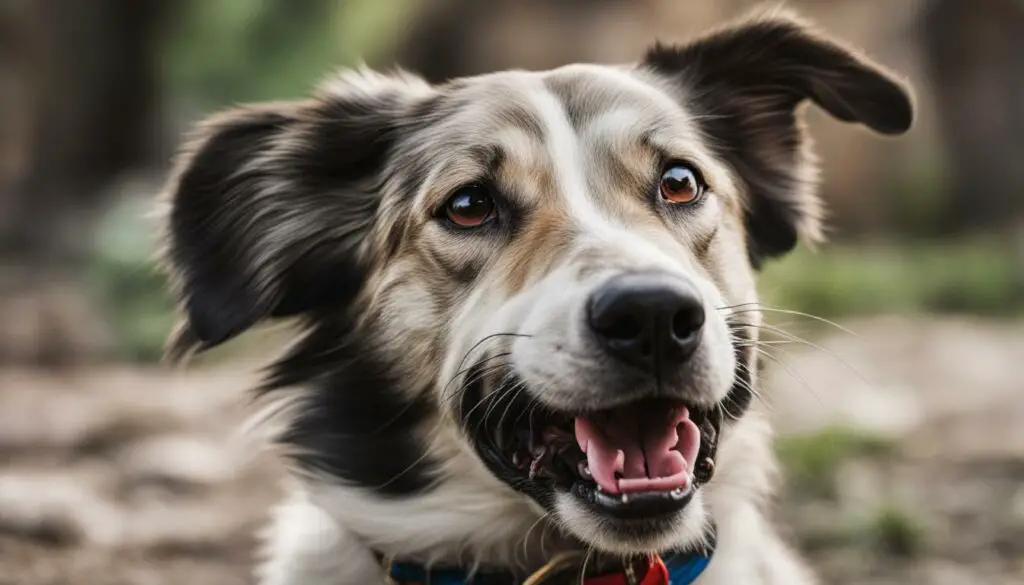
| Complications | Symptoms |
|---|---|
| Intestinal Blockage | Vomiting |
| Choking Hazard | Loss of Appetite |
| Damage to the Digestive Tract | Lethargy |
| Constipation | |
| Choking or Pawing at the Mouth | |
| Abdominal Pain | |
| Changes in Behavior |
The Role of Veterinary Intervention
When your dog swallows a squeaker, veterinary intervention is crucial to ensure their health and well-being. A veterinarian has the expertise and tools necessary to assess the situation and determine the best course of action. They will be able to evaluate the potential risks, such as intestinal blockage, and recommend appropriate treatment options. Acting quickly and seeking professional help can significantly increase the chances of a positive outcome for your furry friend.
Depending on the specific circumstances, your vet may recommend inducing vomiting to try and remove the swallowed squeaker. However, this should only be done under the guidance of a veterinarian, as inducing vomiting incorrectly or in certain situations can cause further harm. In some cases, surgical intervention may be necessary to remove the object from your dog’s intestines. Your vet will be able to determine the most appropriate approach based on the size of the squeaker, the size of your dog, and the location of the object.
During the veterinary intervention, your dog may require X-rays to locate and assess the position of the squeaker. This will help your vet make informed decisions regarding the next steps of treatment. It is important to follow your vet’s guidance and recommendations throughout the process, as they have the expertise and experience to ensure the best possible outcome for your dog.
| Treatment Options | Description |
|---|---|
| Inducing Vomiting | If deemed appropriate by your vet, vomiting may be induced to expel the swallowed squeaker. |
| Monitoring for Natural Passage | In some cases, your vet may recommend monitoring your dog for the object to pass naturally through their system. |
| Surgical Intervention | If the squeaker becomes lodged in the intestines or if other treatment options are unsuccessful, surgery may be necessary to remove the object. |
Remember, always consult a veterinarian if your dog swallows a squeaker or any other foreign object. They will be able to guide you through the appropriate steps to ensure the health and safety of your furry companion.
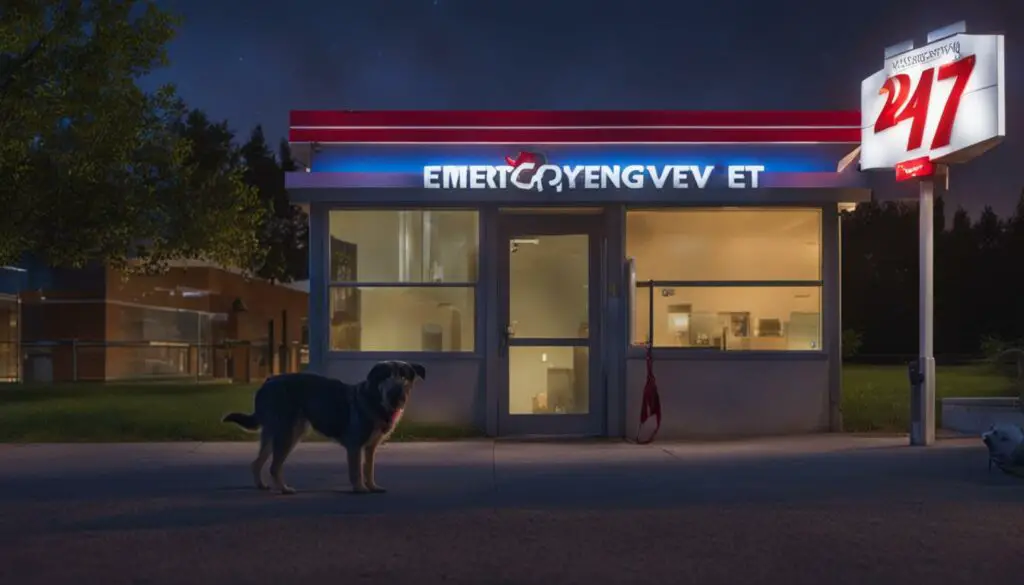
The Importance of Prevention
When it comes to keeping our furry friends safe and healthy, prevention is key. Taking proactive measures to prevent our dogs from swallowing small objects, such as squeakers, can help avoid potentially dangerous situations and unnecessary trips to the vet. By following a few simple tips, we can ensure our dog’s health and safety.
1. Supervise playtime: One of the most effective ways to prevent our dogs from swallowing small objects is to supervise them during playtime. By keeping a close eye on our furry friends, we can quickly intervene if they show any interest in chewing or swallowing objects that could be harmful.
2. Choose appropriate toys: When selecting toys for our dogs, it’s important to choose options that are appropriate for their size and behavior. Opt for toys that are specifically designed for dogs and don’t contain any small or easily ingestible parts. Rope toys, treat toys, tennis balls, chew toys, or plush toys without squeakers can all be safe alternatives.
3. Regularly inspect toys: Regularly inspecting our dog’s toys is crucial to ensure they are in good condition and free from any signs of wear or damage. If a toy is torn or broken, it’s best to replace it immediately to prevent our dogs from accidentally swallowing small pieces.
The Importance of Prevention
In order to keep our dogs safe from the hazards of swallowed squeakers, it’s important to take preventive measures. By supervising playtime, choosing appropriate toys, and regularly inspecting them, we can greatly reduce the risk of our dogs swallowing small objects. By being proactive in our approach, we can provide a safe environment for our furry friends and avoid unnecessary trips to the vet.
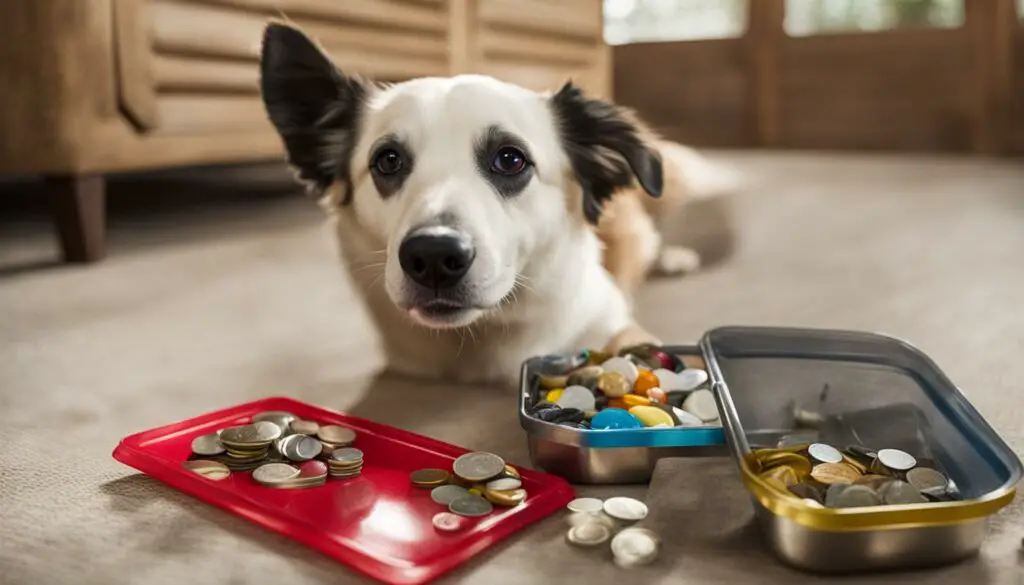
Table: Examples of Safe Toy Alternatives
| Toy Type | Description |
|---|---|
| Rope Toy | Provides a durable and interactive option for chewing and tug-of-war games. |
| Treat Toy | Keeps dogs mentally stimulated as they work to retrieve hidden treats. |
| Tennis Ball | A classic option for fetch games, providing hours of fun and exercise. |
| Chew Toy | Designed specifically for dogs to satisfy their natural chewing instincts. |
| Plush Toy without Squeaker | Soft and cuddly toys that offer comfort without the choking hazard of a squeaker. |
By following these preventive measures, we can ensure the health and safety of our beloved pets. Remember, it’s always better to be proactive in preventing accidents rather than dealing with the consequences later. Let’s keep our dogs happy and healthy by taking the necessary steps to prevent them from swallowing small objects like squeakers.
Conclusion
When your dog ingests a small piece of a plastic squeaker, it is crucial to act swiftly and responsibly to ensure their well-being. Swallowing a plastic squeaker can be dangerous, potentially causing an intestinal blockage. Therefore, taking immediate action is vital.
If you notice signs such as choking, vomiting, loss of appetite, or changes in behavior, it is important to recognize these as potential indications that your dog has swallowed a squeaker. In such cases, immediate veterinary attention is necessary to address the situation properly.
Remember, time is of the essence. Contact your vet immediately for guidance, and if they are not available, reach out to your local emergency pet clinic. Do not induce vomiting without professional advice, as this can cause further harm in certain situations.
Prevention is key to avoid future incidents. Always monitor your dog during playtime, remove any small or easily ingestible parts from toys, and choose appropriate toys for your dog’s size and behavior. By being proactive, you can help keep your furry friend safe from the hazards of swallowed squeakers.
FAQ
What are the signs that my dog has swallowed a piece of a plastic squeaker?
Look out for symptoms such as choking, pawing at the mouth, vomiting, loss of appetite, lethargy, constipation, and changes in behavior.
What should I do if my dog swallows a piece of a plastic squeaker?
Call your vet immediately and follow their instructions. If your vet is closed, contact your local emergency pet clinic for guidance. Do not induce vomiting unless directed by a veterinarian.
Does my dog need to see a vet if they swallow a squeaker?
In many cases, veterinary care is necessary. Your vet may recommend bringing your dog in for an examination and potential treatment.
What treatments are available for a dog that has swallowed a squeaker?
The treatment will depend on various factors, including the size of the squeaker, the size of your dog, and the location of the object. Options may include inducing vomiting, monitoring for the object to pass naturally, or surgical intervention.
Can I monitor my dog at home if they swallow a squeaker?
If your vet determines that the squeaker is small enough and your dog is not showing immediate signs of distress, they may recommend monitoring your dog at home. However, if you notice any concerning symptoms, contact your vet immediately.
How can I prevent my dog from swallowing small objects like squeakers?
Supervise your dog while they play with toys and remove any small or easily ingestible parts. Choose toys that are appropriate for your dog’s size and behavior.
When should I seek professional help if my dog swallows a small piece of a plastic squeaker?
If your dog is choking, unable to breathe, or showing signs of distress, take them to the nearest emergency vet clinic immediately. If you are unable to reach a vet or emergency clinic, you can call animal poison control centers for guidance.
Why is swallowing a plastic squeaker dangerous for dogs?
Swallowing a plastic squeaker can lead to intestinal blockage, causing severe pain, vomiting, constipation, and potentially life-threatening complications.
Why is it important to act quickly when a dog swallows a squeaker?
Acting quickly can significantly reduce the risk of complications and increase the chances of a positive outcome.
What are the potential complications and symptoms of a dog swallowing a squeaker?
Complications may include vomiting, loss of appetite, lethargy, constipation, choking or pawing at the mouth, pain in the abdomen, and changes in behavior.
How does veterinary intervention help when a dog swallows a squeaker?
A veterinarian can assess the situation, determine the location of the squeaker, and recommend the appropriate course of action, which may involve inducing vomiting, performing X-rays, or surgical removal.
How can I prevent my dog from swallowing small objects like squeakers in the future?
Always supervise your dog during playtime, choose appropriate toys, and regularly inspect toys for any signs of wear or damage.

